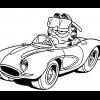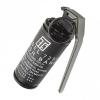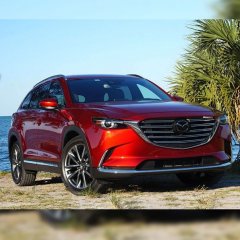Search the Community
Showing results for tags 'dual clutch'.
-
https://www.youtube.com/watch?v=W42zsFYjZvM No wonder VW dry clutch fail so often in SG... too much start stop traffic here...
- 55 replies
-
- 5
-

-
- dual clutch
- gearbox
- (and 4 more)
-
Gears, it seems, are a bit of a nuisance. There is a clutch pedal that the left foot has to depress/release with controlled effort, a lever to move in a gated fashion, and if it all works according to plan, the vehicle is able to continue moving ahead. Get it wrong, and driving a car with a manual gearbox will drive you up the wall. It does take some degree of skill and experience in order to drive smoothly and efficiently with a manual transmission. It can also be immensely rewarding if you master the art of gearchanging, perhaps together with heel-and-toe (an advanced driving technique that deserves its own dissection). But the manual shifting of gears is like a lost art these days, with the Class 3A (automatic-only) driving licence giving learner and rookie drivers alike an easy way out of the “three-pedal problem” since 2005. MANUAL CHRONICLE The traditional manual transmission is as old as the automobile. In its earliest and simplest form, the gearbox was nothing more than engine-driven pulleys of varying sizes on a so-called throughdrive. One of the first proper gearboxes was the 4-speeder in Daimler’s 1889 “wire-wheel” car, but it would be 11 more years to the turn of the century before the physical “box” was formed, i.e. with a single lever in a shift gate to work the gears. Engaging the gears in question was made easier and quieter in the 1930s with the introduction of synchromesh. OPERATING MANUAL A manual transmission uses clutch discs to transmit (hence the term) engine power to the driven wheels, with the gear stick/lever moving a collar to engage different sets of gears underneath. The shift lever is spring loaded to stay in the centre slot until a side force (i.e. your hand changing gears) is applied to the shift knob. The pivoted shift lever would then engage lugs on the control rods that slide forward or backward to move the shift forks, which in turn move the shift collars that lock a gear to the output shaft. Despite the five mentions of “shift” in the preceding paragraph, the only gear that actually shifts is the one for reverse – the other gearsets are engaged when a shift fork forces a shift collar against an already meshed gear, locking it to the rotating output shaft. ROBOT REVOLUTION The robotised manual transmission (also known as an automated manual) was a natural and logical development of the classic “self-service” gearbox. Basically, its clutch operation is performed by an electro-mechanical device, thus “removing” the clutch pedal from the footwell and saving the driver some footwork. But to minimise jerkiness on the move, he needs to make a conscious effort to coordinate the gearshifts with his accelerator inputs. Early versions of the robotised manual, such as the 1997 Mercedes-Benz A-Class’ automatic clutch system and the 1994 Saab 900 Turbo’s short-lived Sensonic, still require the driver to make gearchanges with a H-gate lever. Based on the movement of said lever, the position of the throttle pedal and the engine speed at that point, a computer recognises when the driver wants to change to a higher/lower gear and then an actuator will automatically open and close the clutch using electro-hydraulics. The robotised manuals that came later, such as Alfa Romeo’s Selespeed, Opel’s Easytronic and Ferrari’s exotic “F1” transmission (launched in the F355 Berlinetta), still do not function anywhere as smoothly as a conventional automatic, but they at least offer semi-auto convenience plus the ef ciency of a good manual gearbox. It’s cost-effective, too, compared to a typical torque-converter automatic transmission. Today’s state-of-the-art in robotised manuals is the dual-clutch transmission (DCT), popularised by the Volkswagen Group in a massive variety of models that range from the humble Polo to the spectacular Bugatti Veyron. Smoother and significantly faster than the automated single-clutch system covered earlier, the DCT is conceptually similar to an automated manual because it is made up of paired gears in mesh and has a clutch arrangement to couple with the engine. The DCT is costlier and more complex though, with a pair of clutches, each mounted on one of two concentric shafts. Only one clutch is engaged at any one time, although two gears can be selected simultaneously, hence a gearchange becomes effectively just the disengagement of one clutch and the engagement of another. This results in a seamless delivery of power. Despite the popularity and proven technology of the dual-clutch transmission, the single-clutch automated manual is still very much in business. And what a business it has been in recent years, with Ferrari, Lamborghini and Lexus using a robotised manual gearbox for their supercars – 599 GTB/GTO, Murcielago/ Aventador and LFA respectively. The internals of these “super” transmissions are no different from those of a conventional manual ’box, but their shift speeds (thanks to rapid-response actuators) are a match for the DCT and, more crucially, quicker than even the most skilful driver. GENERATION SEVEN Meanwhile, the pure manual gearbox continues to exist. Europeans, especially, still love their clutch pedal-and-gear lever, so there is a wide choice of cars and vans available in Europe with 5- or 6-speed manuals. Now, there is also a 7-speed manual gearbox, but it’s a rare thing, with currently just two cars in the world so equipped. Unsurprisingly, both are sports models – the Porsche 911 and the Chevrolet Corvette Stingray. Seven gears mean the first six gear ratios can be stacked closer together, while seventh can be “sized” as a cruising gear to keep engine speeds low at high road speeds. Of course, there’s a limit to how low the revolutions-per-minute (rpm) can go, because the engine has to operate at a speed where enough torque is produced to overcome resistance, especially aerodynamic drag and ascending inclines. On a deserted country road with undulating terrain and plenty of curves, where short bursts of acceleration and frequent downshifts are the norm, these 7-speed sports cars are likely to be driven with only six or maybe just the first five gears. Seventh is fi ne as a fuel-saving highway ratio, but having/managing 8 or 9 speeds in a manual gearbox can be quite tedious, which is why we may never see a manual transmission with more than seven forward ratios. In the case of Porsche’s “991” 911, a built-in gearbox lock-out ensures seventh gear can only be selected via sixth or fifth. Regardless of its gear count, the good old manual transmission will keep going for many years yet, thanks to its relative simplicity, comparative low cost, minimal maintenance requirements and almost endless service life. This article was written by Shreejit Changaroth, freelance writer for Torque.
-
Kia has announced their 7 Speed DCT will be launched in 2015. It will be interesting to see how it will perform on the Koup with 1.6 Turbo. http://www.caradvice.com.au/273297/kia-to-launch-new-seven-speed-dual-clutch-automatic-in-2015/ Kia will introduce a new seven-speed dual-clutch automatic transmission to its passenger vehicle range from 2015. The new transmission will replace the six-speed auto that is currently available across most models in the car maker’s line-up. The new seven-speed DCT is understood to have been designed primarily for higher-power engines and larger vehicles, though is believed to be versatile enough to fit a broad range vehicle sizes, potentially from the Kia Rio city car (pictured below) to the Grand Carnival people-mover. Kia says its engineers have targeted a seven per cent improvement in fuel efficiency and a five per cent improvement in 0-100km/h acceleration ability from the seven-speed dual-clutch compared with the brand’s existing six-speed dual-clutch unit. Using two dry clutches equipped with an electric motor-driven clutch actuator and a pair of gear input shafts, Kia promises faster shift times than those achieved by conventional manual and automatic gearboxes, and the ability to shift sequentially or jump instantaneously to any forward gear based on the driver’s requirements. Kia says the near-continuous power delivery offered by the seven-speed unit minimises the loss of torque during gearshifts, promising a smoother drive across all conditions. An external damper has also been integrated in the pursuit of enhanced NVH (noise, vibration, harshness) refinement. The car maker claims the seven-speed dual-clutch transmission will deliver greater fuel efficiency and a sportier driving experience than any gearbox ever fitted to a Kia. It’s not yet clear which model will be the first to offer the seven-speed unit. Kia Australia public relations general manager Kevin Hepworth says the transmission is definitely headed our way and is a chance to reach local showrooms next year, though admitted the timing of its introduction will be dictated by the arrival of new and updated models.
- 10 replies
-
- kia
- transmission
-
(and 4 more)
Tagged with:
-
In Japan, Honda is not so well known when it comes to hybrid cars. Over there, Toyota or Lexus is more popular for its hybrid offerings. Although Honda has been producing hybrid cars for quite a while, they are not popular as Toyota's Hybrid Synergy Drive vehicles. But things are about to change as Honda has announced three new hybrid systems that will be used in the near future. Let's start off with the Sport Hybrid Intelligent Dual Clutch Drive system. This particular one is aimed specifically at small, compact cars. It is a single motor system and Honda promises the best fuel economy in its class and better acceleration than any existing Integrated Motor Assist (IMA) vehicles. This system features a 1.5-litre Atkinson Cycle engine with a seven speed dual clutch transmission which contains an integrated high output electric motor powered by lithium ion batteries. During heavy acceleration and high speeds, the system uses both engine and motor power. While in low and medium speed, the car functions as an electric vehicle; provided there are sufficient battery charge. Honda stated that this system will improve efficiency by thirty percent when compared to its previous IMA vehicles and at the same time it delivers a more linear acceleration. Next up is the Sport Hybrid Intelligent Multi Mode Drive which is for larger sized cars. This system features a two motor system which offers three different types of driving modes. Firstly is the EV Drive which allows the vehicle to function in pure electric mode. This will give a good range in planned plug-in versions. Next is the Engine Drive mode which is used for medium to high speeds. And lastly is the Hybrid Drive mode which mixes power from the engine and the two electric motors. This is particularly useful during heavy acceleration and stop-and-go traffic. Lastly, the hybrid system which might interest some performance enthusiasts; is the Sport Hybrid Super Handling All Wheel Drive system which utilises three motors. This system uses two electric motors to drive the rear wheels and an engine and a seven speed dual clutch gearbox with an integrated electric motor for the front wheels. This particular system is ideal for performance and fuel economy. It is said that torque could be precisely optimised for traction on the rear wheels across a wide range of road surfaces and conditions. A fitted 3.5-litre V6 engine will support the electric motor to give a V8 engine-like acceleration with a V6 engine fuel economy. Honda mentioned that this system can deliver the performance benefits of an all wheel drive performance vehicle while minimising the weight penalties of such conventional systems. These three new hybrid systems are expected to feature in Honda vehicles in the near future. Image credit: Honda and Net Car Show
- 1 comment
-
- new technology
- hybrid cars
- (and 10 more)
-

Mercedes Benz CLA to get the same engine as the A 45 AMG
FaezClutchless posted a blog entry in MyAutoBlog
Just a few months back, Mercedes Benz announced that they will release an AMG version of the A-Class. Known as the A 45 AMG, the car is said to rival other performance models such as the RS3 and the M135i and the car will get a rather powerful engine. The A45 AMG will be fitted with the M133 engine which is a turbocharged 2.0-litre, four cylinder unit. It makes around 350bhp and 400Nm of torque. The engine is fitted with a single Borg Warner twin scroll turbocharger which redlines at 6,300rpm. That sounds pretty impressive and it would be great if Mercedes Benz offers the same engine in other models. And that is exactly what the German auto giant is going to do. The M133 engine will be used on a new, upcoming model which is called the CLA-Class. The CLA-Class is said to be heavily based on a recent concept known as the Style Coupe Concept (top most image). The CLA-Class will be based on a front wheel drive or an all wheel drive platform and it is sized just below the C-Class. The transmission that will be used on the A 45 AMG is a new seven speed dual clutch gearbox and it is possible that it will be used on the CLA-Class. Obviously, the M133 engine will only be fitted to the highest grade of the CLA-Class. The base model will likely get a turbocharged four cylinder unit that makes around 210bhp. The A 45 AMG is set to debut at the Geneva Motor Show in March next year and the CLA will be introduced shortly after that. Mercedes Benz intends to offer both models for sale within a few moths after their debut. -

Will paddle shifters be the future of automotive transmissions?
FaezClutchless posted a blog entry in MyAutoBlog
It is evident that many automakers nowadays feature automated-manual transmissions (that usually comes with a paddle shifter) in their performance cars. In other words, these automated-manual transmissions with paddle shifters are the in-thing now. Every technology in our lives are ever changing and getting replaced with new and better ones and will paddle shifting transmissions replace manual ones and even conventional auto gearboxes totally? I have asked the above mentioned question to several car owners; both performance and ordinary car owners and they are in their 20s up to 40s (age range). Below are their opinions. Many felt that manual transmissions will still be the choice of hardcore drivers who prefer the shift stick and clutch pedal combination. It would be hard to remove the manual stick and clutch pedal feeling from them. And there are some who believe that these automated-manual (or dual clutch) transmissions will sit well in between conventional automatic transmissions drivers and sports-orientated drivers. In a way, it is probably ideal for drivers who have problems with the stick and clutch pedal combination or drivers who are simply can- 3 comments
-
- discussions
- america
- (and 15 more)
-
We have witnessed a tremendous rise in applications of twin clutch transmission in recent years. Manufacturers may call such technology by different names such as DSG (VW), Powershift (Ford), S Tronic (Audi), PDK (Porsche). I won't be surprised if torque converter equipped transmission makes it to the museum in 10 years' time. Let's take a detailed look at the future of automatic transmission. Twin-clutch gearbox was first put into production by BorgWarner, which calls it "DualTronic". It was first used in Audi TT 3.2 in the name "DSG" (Direct-Shift Gearbox). Like automated manual gearbox, BorgWarner
- 1 comment
-
- DSG
- powershift
-
(and 3 more)
Tagged with:
-
[extract] $65,900. That
- 5 comments
-
- volkswagen
- vw
- (and 8 more)




